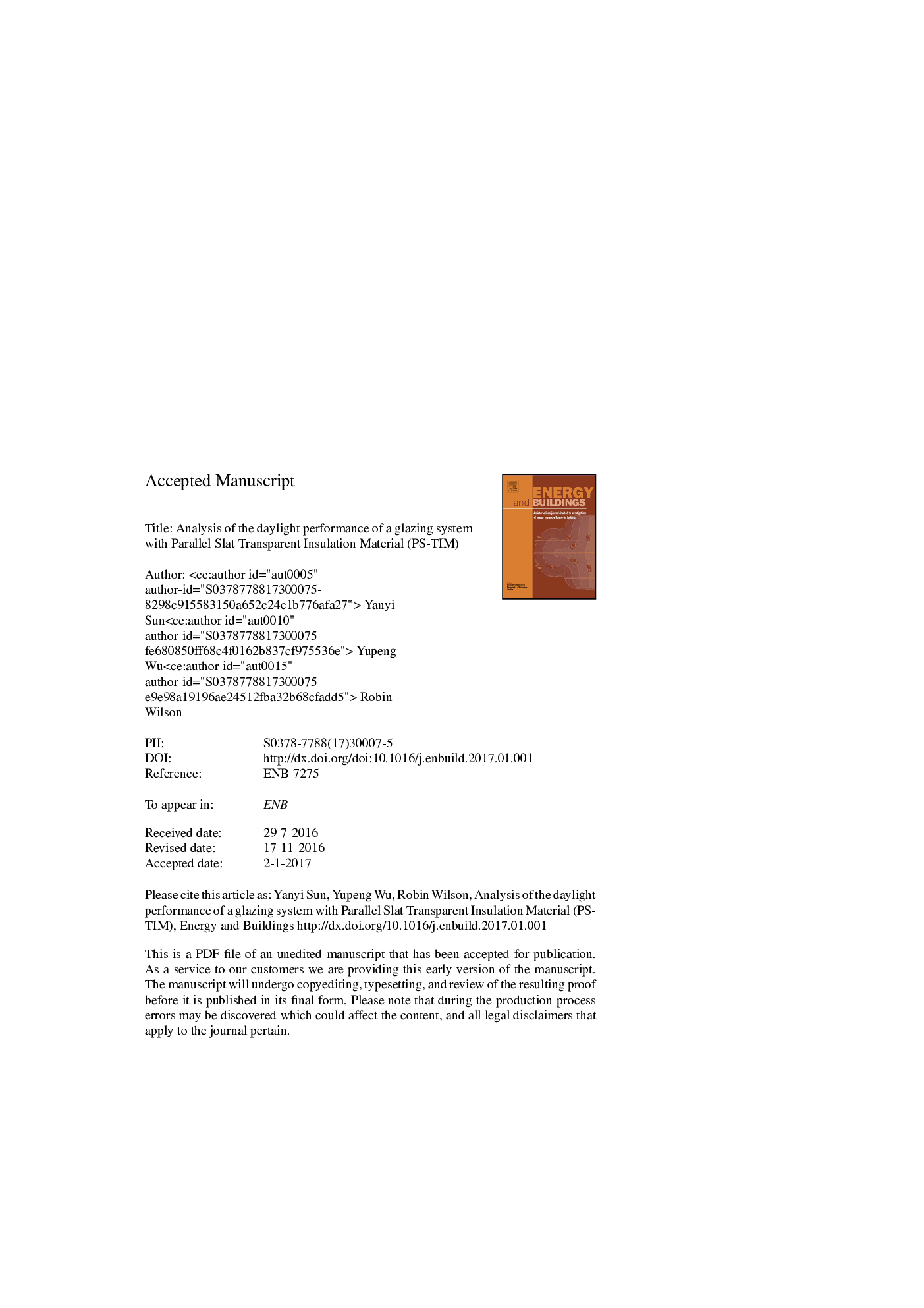| Article ID | Journal | Published Year | Pages | File Type |
|---|---|---|---|---|
| 4919353 | Energy and Buildings | 2017 | 55 Pages |
Abstract
Daylight plays an important role in the energy efficiency and indoor environmental quality of an office building. An innovative façade system where parallel transparent/translucent plastic slats are sandwiched between glass panes to form a Parallel Slat Transparent Insulation Material (PS-TIM) is proposed as a strategy to effectively increase the thermal resistance of window systems, while providing better daylight performance. In this paper, the optical performance (as defined by Bidirectional Scattering Distribution Function) of a double glazed window containing PS-TIM systems with different slat pitches (the distance between neighbouring slats), slat tilt angles, as well as the slat materials (transparent and translucent) was obtained using a ray-tracing technique. Then, the annual daylight performance of a typical office building with various PS-TIM applied under different climatic conditions and at different orientations was investigated using RADIANCE. The simulation results show that PS-TIM with translucent slats offers better daylight performance than conventional double glazing: it can increase the percentage of annual working hours under daylight, where the illuminance lies in the useful range by up to 79%. It also achieves a homogenous distribution of daylight within the internal working space and effectively reduces the possibility of glare. When applying PS- TIM at higher site latitude, smaller slat pitches are required to maximise useful daylight. Optimised PS-TIM geometry is also affected by local prevailing sky conditions.
Keywords
Related Topics
Physical Sciences and Engineering
Energy
Renewable Energy, Sustainability and the Environment
Authors
Yanyi Sun, Yupeng Wu, Robin Wilson,
